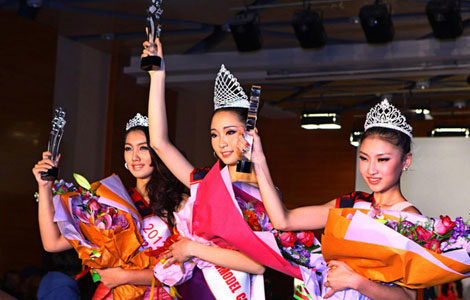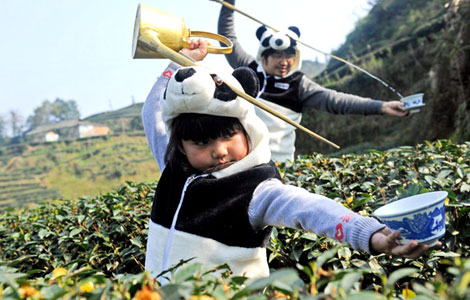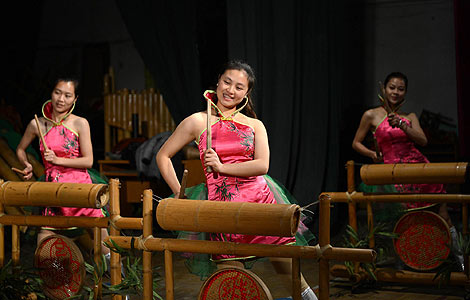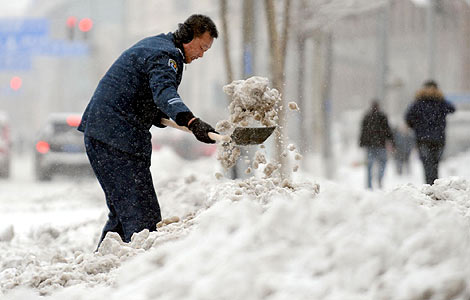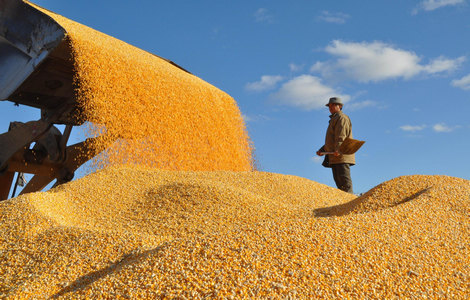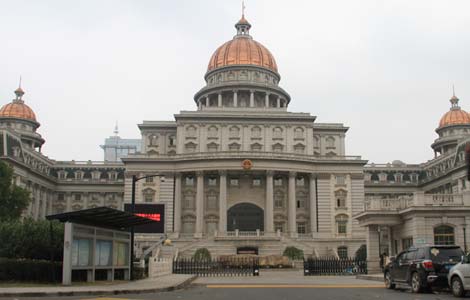
You don't need a crystal ball or an industry analyst to tell you that the 13-percent drop in imports of cosmetics into China for the first half of this year was probably a blip.
True, the volume of cosmetics imports dropped heavily compared with the same period last year, according to the China Luxury Report 2012.
But retail sales of cosmetics in China rose 16.5 percent in the first 10 months of the year, totaling 107.7 billion yuan ($17.3 billion), compared with the same period last year, according to figures from the National Bureau of Statistics.
"The market is still growing, but just at a slower pace than in previous years," said Wang Jiajun, an analyst with China Market Research Group of Shanghai.
But the strongest evidence that China's cosmetics industry is coasting, comes from the massive expansion plans being made by some of the industry's biggest international companies — such as Estee Lauder Companies Inc and Mary Kay Inc of the United States and Shiseido Group of Japan.
Industry figures show there are more than 5,000 cosmetics companies in China, 90 percent of which are small or medium-size domestic brands.
However, international brands have a market share of more than 80 percent, according to Global Entrepreneur, a leading business magazine in China.
A recently published report, Beauty and Personal Care in China 2012, by Euromonitor International Ltd, highlights how multinationals offer more brands and products across a range of categories and prices.
Estee Lauder, which sells 12 of its 28 cosmetic brands in China, is arguably making the biggest splash among those multinationals, by doing what many companies rarely attempt — introducing an entirely new brand.
Known for its Estee Lauder, Clinique and Bobby Brown brands, the company has introduced a new line called Osiao, which specifically caters to Chinese consumers.
Osiao was launched in Hong Kong in November and is expected to be launched in the mainland in early 2014.
"China has become the company's third-largest market following the United States and Britain with a turnover of $500 million in the 2012 fiscal year that ended June 30," said Fabrice Weber, president of Estee Lauder's Asia-Pacific division, in an interview with 21st Century Business Herald.
Apart from major cities such as Beijing, the company is focusing on high-end consumers in second- and third-tier cities.
Since 2002, when the company established a Shanghai office, Estee Lauder products have been sold in around 60 Chinese cities.
This year China surpassed Japan as the company's hottest sales region in Asia, with 28-percent growth in sales, the company said.
"European and US brands are very strong in the higher-end market as they are viewed as having superior technology, such as anti-aging creams, and quality," Wang said.
"Consumers trust these brands a lot more and are willing to pay high premiums for them."
Another of the mainland's cosmetics mainstays, Shiseido, which has been operating in China for 31 years, is aiming to take its domestic sales revenue above 100 billion yuan by early next year.
The first overseas cosmetics maker to enter the mainland market, it sells a wide variety of products ranging in price from dozens of yuan to nearly 5,000 yuan.
Late last year, Shiseido began to sell its Pure&Mild brand products online, and early this year it began selling its products on Tmall.com.
Estee Lauder, its biggest competitor, grew its online sales by 40 percent in China in the fourth quarter of fiscal year 2012, and is already reaching online consumers in nearly 350 Chinese cities.
"Even though the online channel only accounts for a small percentage of sales, it is growing the fastest of all," Wang added.
"Brands need to have a strong online store, either self-operated or through e-retailers such as Tmall and 360buy."
In keeping up with market trends, Shiseido has maintained annual double-digit sales growth in China since 2004.
Sales reached 89.1 billion yuan for the year ending March 31.
"China now accounts for 11 percent of our global business," said Yang Yan, general manager of public relations at Shiseido China Co Ltd.
Shiseido's beginnings in the mainland go back to 1981 when it first sold about 60 imported products at large retail outlets and hotels in Beijing.
It launched Aupres, a brand exclusively for department stores in China, in 1994.
The 140-year-old company established Shiseido China Co Ltd, a wholly owned subsidiary, in Shanghai in 2003, after starting production at its own factory and opening Shiseido China Research Center Co Ltd, both in Beijing.
"We have more understanding about local consumers and have also gone ahead in creating special products for Chinese consumers," said Yang, explaining Shiseido's advantages on its competitors.
Shiseido has also recently expanded its sales channels into specialty cosmetics stores that are more popular in lower-tier Chinese cities, selling mostly its Urara and Pure&Mild brands.
It now has contracts with more than 5,900 stores.
"It gives us a convenient way to have contact with consumers, especially in smaller cities," Yang added.
"I think one very important concept that can explain the success of a brand regardless of its origin, is its sales channel strategy.
"Currently, the bulk of our sales are still being made in department stores or retail outlets such as Sephora.
"Asian brands are more focused on all-natural products that enhance appearance, for example, with hydrating lotions or skin-whitening creams, which are very attractive to younger consumers in the 15-30 age group who are less focused on maintaining their youthful appearance."
But Mary Kay, the direct cosmetics seller, takes a different approach to building sales in China.
It emphasizes customer service instead of simply expanding sales channels.
"We are arriving in homes to provide a service for each customer," said Paul Mak, president of Mary Kay in China.
"Faced with the burgeoning online retail market, we are competing with other companies on the one-to-one, face-to-face basis."
Mary Kay established its first overseas factory in Hangzhou, Zhejiang province, in 1995.
It is now working on the second phase of its manufacturing center in the city, believing that China will surpass the US to become its biggest market next year.
Mak said that China has become Mary Kay's largest overseas market, adding that its sales force is crucial to its direct sales.
The company's sales volume in China increased 55-fold between 1999 and 2011 and its workforce tripled.
Though it is sticking to its direct sales channel and developing the strengths of its salespeople, it is also introducing innovative products to the market.
"Targeting big cities, we launched the higher-end product line TimeWise Plus in July, as we realized that consumers in Beijing and Shanghai are paying more attention to premium goods as they trade up and enjoy higher incomes," Mak said.
In smaller cities, Mary Kay's marketing strategy sees it sending out distinctive fleets of pink buses to introduce its product lines to consumers, which allow them to try out the products onboard.
Wang Jiajun from China Market Research Group said customer service remains crucial to the cosmetics industry,
He added that a big part of that involves staff training, and that cosmetics giants need to train their salespeople, or beauty assistants, in how to recommend products, and push sales.
"Many purchases are still impulse purchases, and many consumers want to learn more about products," he added. "They will simply walk away if staff cannot inform them."
Xu Junqian contributed to this story.
